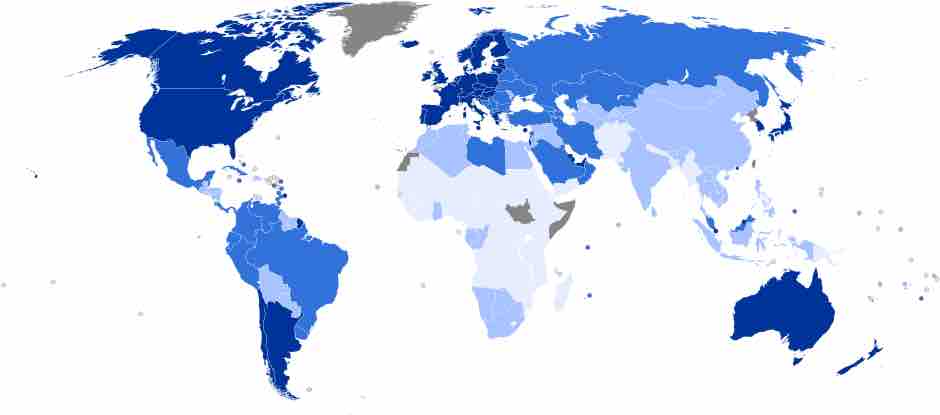Across the globe, industrialization increases the average life span of people. Industrialization is the process of social and economic change that transforms a community from an agrarian society into an industrial one. It is a part of a wider modernization process, where social change and economic development are closely related with technological innovation. The United Kingdom began an Industrial Revolution in the mid-eighteenth century due to the availability of land, labor, and investment capital.
Most Western countries industrialized by the nineteenth century but the Industrial Revolution is still occurring around the world. One schematic by which one can divide the world is between industrialized and non-industrialized countries. Industrialized countries are defined by measures of economic growth and security. Most commonly, the criteria for evaluating the degree of development is to look at the gross domestic product (GDP), the per capita income, the level of industrialization, the amount of widespread infrastructure, and the general standard of living. Countries that score poorly on these scales are considered to be non-industrialized, though it should be noted that non-industrialized countries are undergoing the process of industrialization.
All over the world, people are living longer than ever before. However, while the trend of a growing older population appears the world over, people in industrialized nations are older than people in non-industrialized nations. Thus, while people in all countries are living longer than prior generations, people in industrialized nations live longer than people in non-industrialized nations. According to the Population Research Bureau, the average life expectancy in Africa is 53, in North America is 78, in Latin America is 73, in Asia is 68, in Europe is 75, and in Oceania is 75. Worldwide, about 8% of the total global population is over the age of 65, while about 12% of Americans are over the age of 65.
How can one explain this disparity? Industrialization brings money into an economy. With this influx of capital, countries are able to develop more robust social supports to assist a population. Further, development can create jobs, enabling people to better fend for themselves. Food and healthcare are more widely available. Better living conditions and healthcare both limit the infant mortality rate, which is the percentage of children who die before turning one year old, and extend the average life expectancy. Both of these trends encourage the growth of an older population.

Industrialized Nations
2011